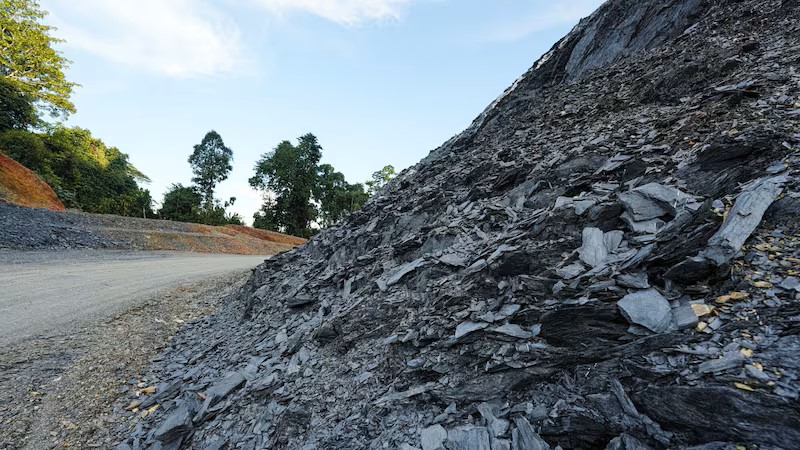Banks and investors stand to benefit from a growing number of deals to cut emissions from coal plants, according to a new initiative led by France and Indonesia that aims to shut down those polluting facilities more quickly.
The Coal Transition Commission, launched last year by French President Emmanuel Macron, said in a report on Tuesday that there’s “clearly potential” for private finance to take a more active role in speeding up the early closure of coal plants — and in supporting measures to more quickly cut emissions produced by those still operating. It also concluded that regulators need to relax their sustainability criteria to make that happen.
The group made its case on the sidelines of the COP29 climate summit in Azerbaijan, where representatives from almost 200 countries are gathered to discuss how they can work together to stem the increase in global temperatures. This year’s talks are focused on raising more money from developed nations to help poorer countries cut greenhouse gas emissions and adapt to more extreme weather.
“The way to net zero isn’t by divesting away from coal but by investing in its early phaseout,” Ravi Menon, Singapore’s ambassador for climate action and a contributor to the commission’s report, said in a statement Tuesday. (The Coal Transition Commission is supported by Bloomberg Philanthropies.)
Coal is the world’s dirtiest fossil fuel. It’s also the largest source of electricity worldwide, representing 36% of generation globally, according to the International Energy Agency. If the existing coal fleet continues to operate as usual, that alone would push the world past the Paris Agreement target of limiting global warming to 1.5C, the commission estimated.
At the same time, closing coal plants early is a complex task, particularly in developing countries where they’re often newer than in places like the UK, which shut its last remaining coal plant earlier this year. New clean energy sources need to be readily available — and investors in the plants must be compensated.
Governments often lack the funds to cover the costs, and many banks and investors have climate policies that restrict them from financing coal. Existing efforts to raise financing to speed up the move away from coal have been beset by delays, as well as political and financial hurdles.
The commission’s assessment shows that “there is a clear path forward to mobilize the billions” needed, said Agnès Pannier-Runacher, France’s energy minister. “Innovative financing solutions” will be key, she said.
The commission highlighted blended finance as one solution. These structures use public funds to de-risk and incentivize private investment. It also said that there is a role to be played by carbon credits — financial instruments that can be bought and sold, each representing a ton of carbon dioxide emissions reduced or removed from the atmosphere. The Monetary Authority of Singapore is piloting the use of such credits to help finance the early closure of coal plants. Sustainability-liked loans are another alternative as they can help monetize emissions cuts associated with a coal-transition deal.
“Financial structures will need to be developed that enable [the] costs to be covered, and private investors to make reasonable returns,” the commission said.
Efforts are already underway to press regulators to recognize the financing of early coal retirement as an example of so-called transition finance. It’s a category of investing that’s not been clearly defined, but generally refers to funding activities that help move companies or assets to cleaner, less polluting business models. Transition finance is distinct from “green” finance, which refers to funding things that are already considered clean, such as wind farms or electric vehicles.
Now, the commission is recommending that regulators relax their approach even further and recognize emissions cuts at coal plants as transition finance, a step Singapore has already taken. These can be achieved by repurposing coal plants to run more flexibly, so they can ramp down or up subject to needs rather than running constantly. Other ways to cut emissions include fitting coal plants with carbon-capture technology and mixing in lower-carbon fuels such as biomass or ammonia, the commission said.
Environmental campaigners, however, are skeptical. While consensus is building around the importance of finding new funding mechanisms to help shutter coal plants early, carbon credits are not a suitable instrument, says Paddy McCully, senior energy transition analyst at nonprofit Reclaim Finance.
The commission’s support for carbon offset schemes to finance coal phaseout “portrays a lack of critical thinking,” McCully said. It has “ignored the basic conceptual flaws of carbon markets and the last quarter century of failed efforts to make them work,” he said.
McCully also described carbon capture technology and co-firing plants with ammonia or biomass as “dead-end technologies” on the basis of their “costs, non-viability, and lack of climate benefits.”
For Mark Carney, United Nations Special Envoy on Climate Action and Finance and another contributor to the report, the urgency to cut emissions means every avenue should be pursued. That includes ambitious government policy, more catalytic public capital, new definitions of transition finance and carbon credits. (Carney is also chair of Bloomberg Inc.)
“There is no time to waste,” Carney said. The commission’s “recommendations should be implemented as quickly as possible.”



